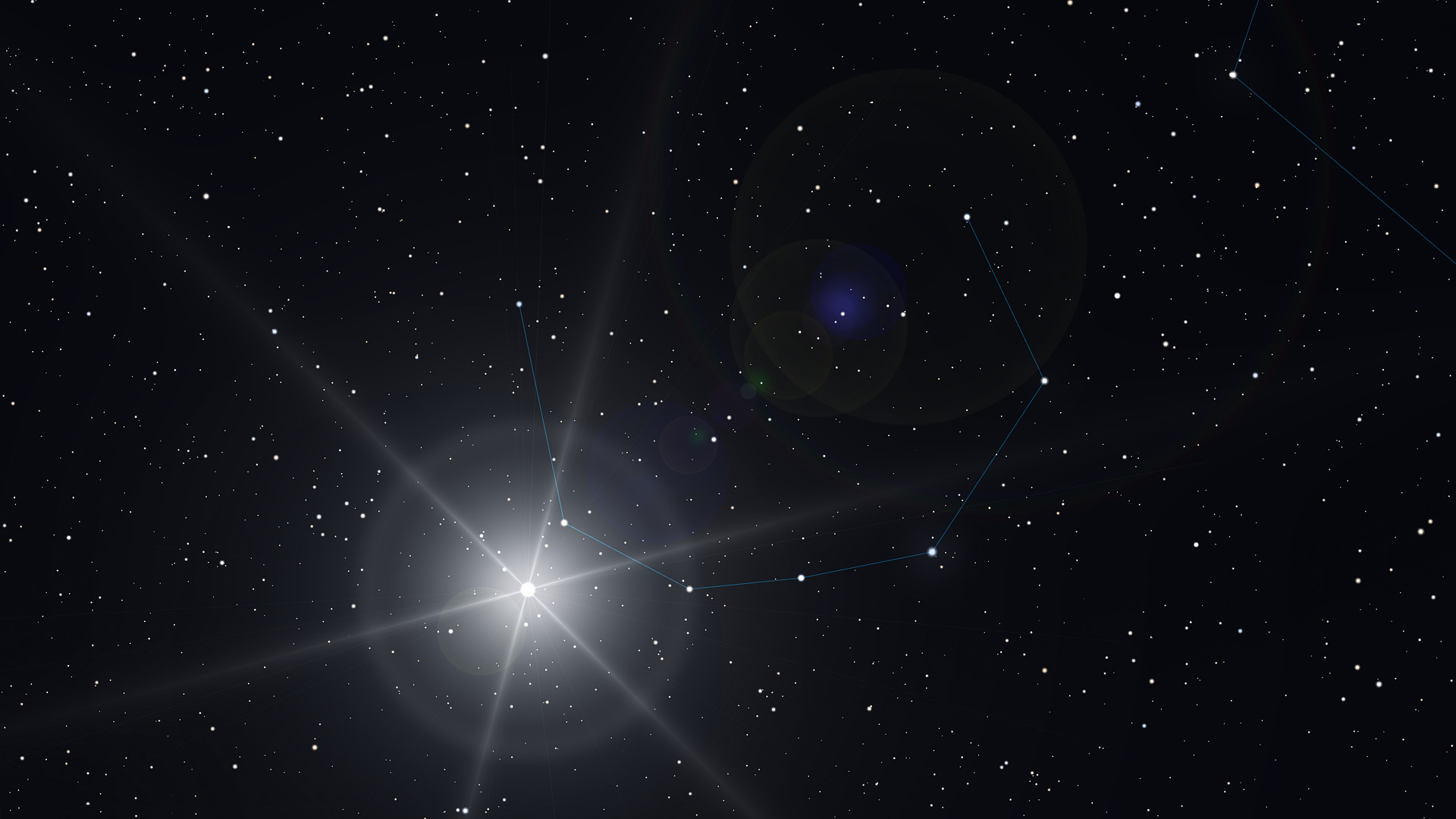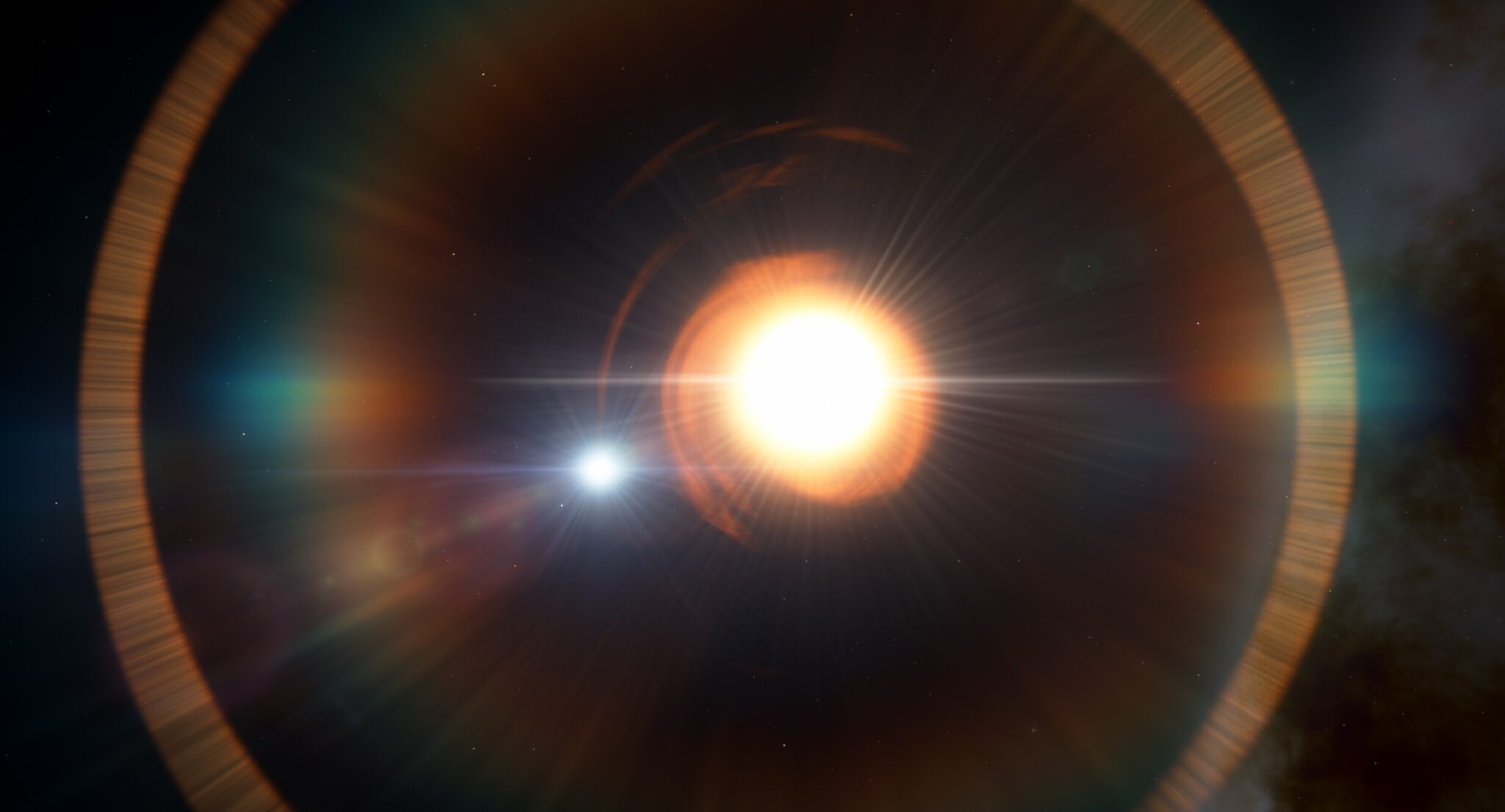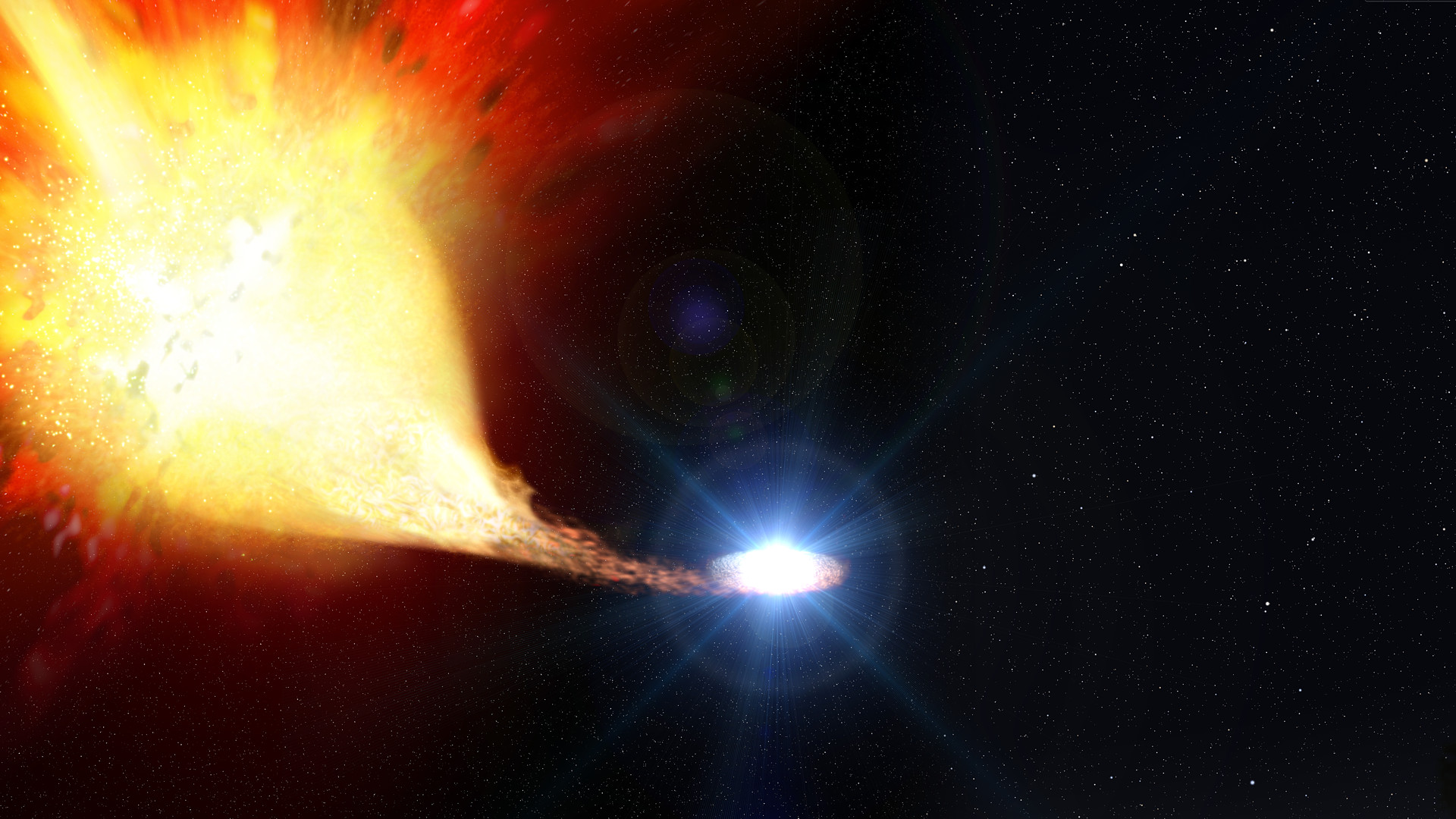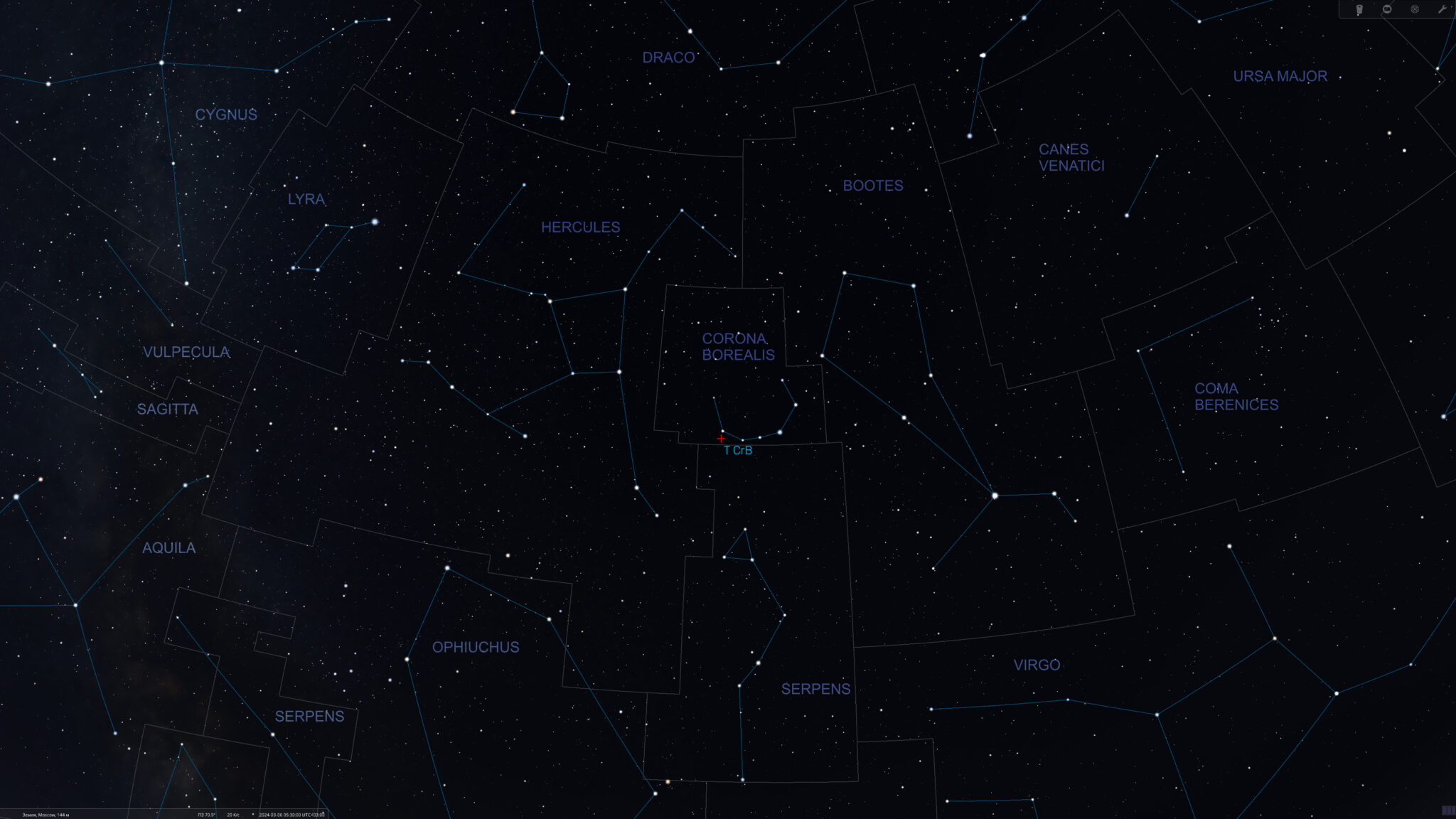A star at a distance of 3 thousand light-years from Earth may soon give us an impressive sight – an explosion that can surpass even the North Star in brightness. NASA expects that this huge explosion, known as nova, may be visible to the naked eye over the coming months. This once-in-a-lifetime phenomenon can be an “exciting cataclysm of the future,” according to astrophysicist Bradley Schaefer of Louisiana State University.

The most interesting thing is that the supernova explosion will complement a number of bright celestial phenomena this year. Among them is a total solar eclipse in April for residents of the United States and Canada, as well as a huge green comet, which is already beginning to become noticeable.
All this is due to the flare of a new one called T Coronae Borealis (T CrB). When a white dwarf – the core of a dead star – closes in on the orbit of a red giant star, a cosmic explosion occurs, known as a nova. When a red giant tears apart neighboring stars, the dense white giant absorbs these fragments, which are a mixture of hydrogen-rich material. Then the tiny dead star gradually gets hotter until it reaches a critical point of rupture, when all this energy is released in a huge cosmic explosion — a so-called nova.
Difference between novae and supernovae
Do not confuse novae and supernovae. Although some episodes may be similar, supernovae are still a one-time event, after which the star that gave the flare dies forever, collapsing into a neutron star or black hole.

Nova is a term for a system of two stars, one of which has completely gone through the path of evolution from a blue star to a white dwarf, and has exhausted fuel from its depths. But if a red giant is located near a white dwarf, which is also already living out its stellar life, a smaller star can steal from the giant its outer layers of matter, which the giant itself hardly controls. Finally, after a while, the white dwarf gathers enough matter for one thermonuclear explosion.
Flares of the T Coronae Borealis occur with an interval of 80 years – is it not too often for a nova? That is why T Coronae Borealis belongs to a rare class of novae, which is called Novalike Stars or Repeated Novae.

The period between the flares of this star can be compared with the duration of a human life. And you can see T Coronae Borealis with the naked eye only once. Here you can catch an allegorical connection with Halley’s comet, which is accessible to the human eye only once in a lifetime.
How dangerous is it for the Earth?
Novae are literally giant hydrogen bombs in space. However, there is no need to worry – T Coronae Borealis is located too far away for its energy to threaten the Earth.

Nova was first noticed in 1866. The last time it exploded was in 1946. A new increase in luminosity was recorded in 2015 – its characteristic dynamics very closely corresponded to the events that occurred before the nova explosion in the past. According to the researchers, the expected time of the explosion of the nova falls on the period from February to September 2024. This is good news, because at this time the constellation Corona Borealis is most visible.
So get ready for the greatest cosmic spectacle, which will soon reveal its natural beauty to us.
Earlier, we reported on how astronomers discovered flares of micronovae.
According to sciencealert.com
Follow us on Twitter to get the most interesting space news in time
https://twitter.comne/ust_magazine


